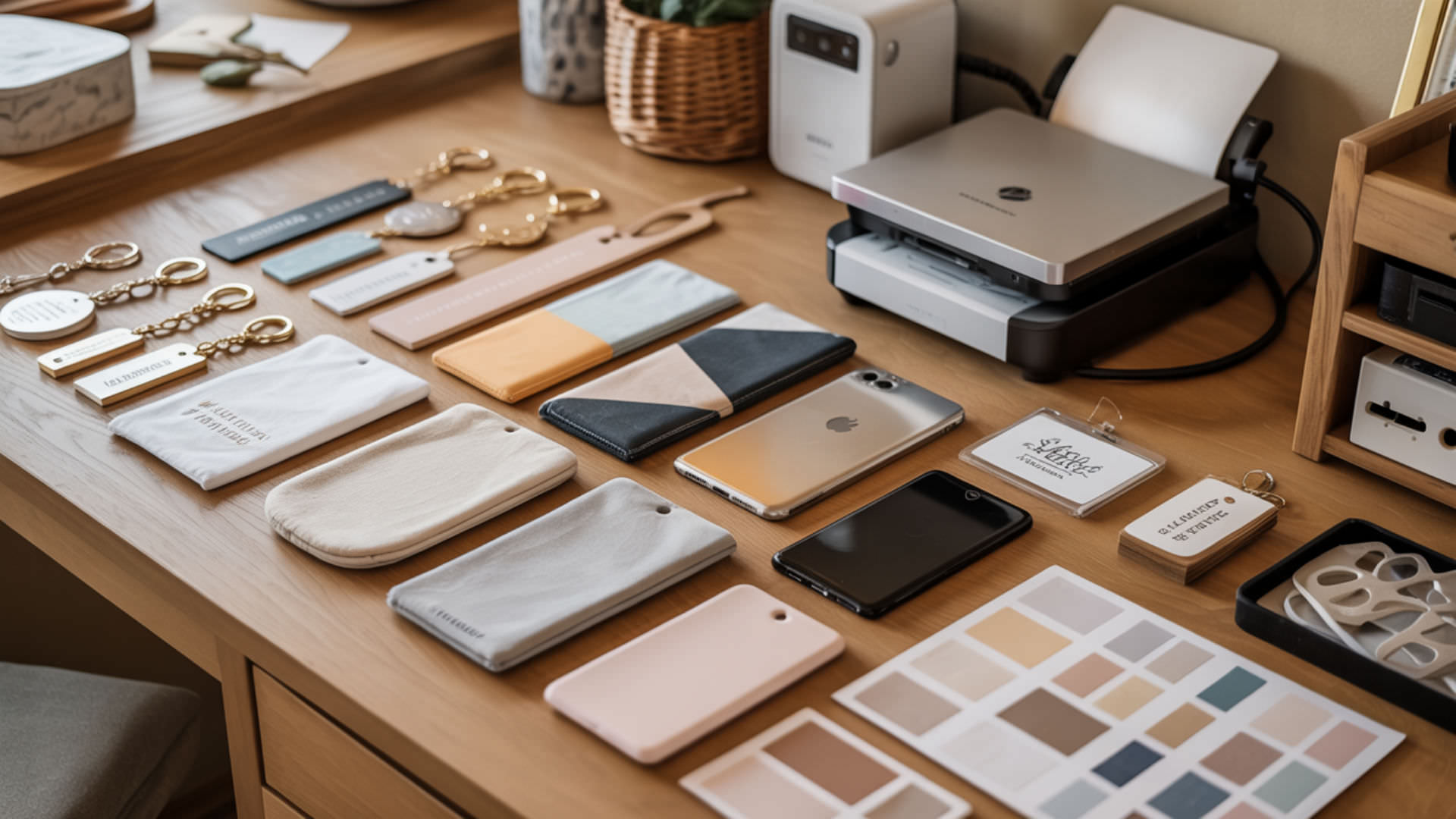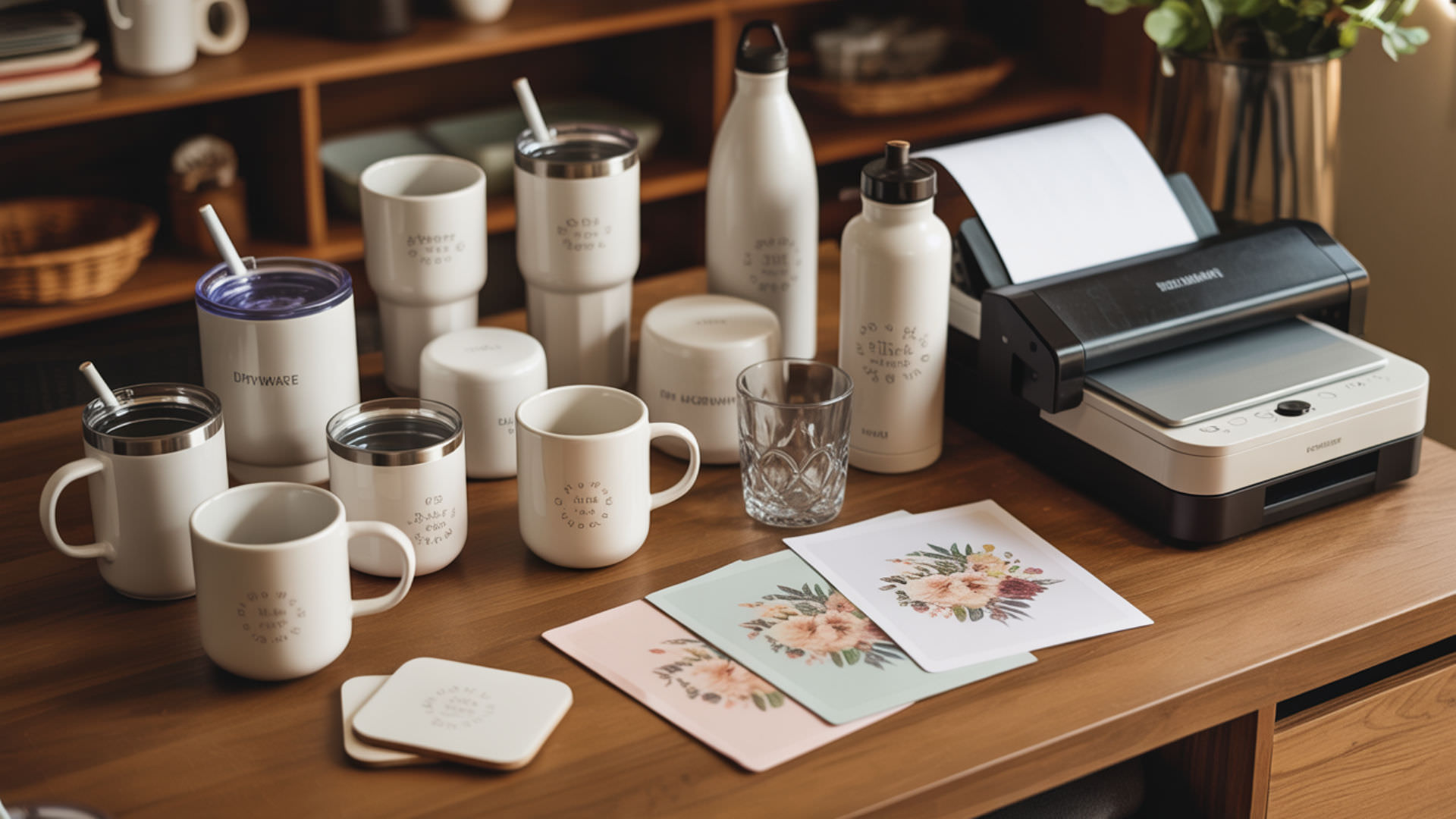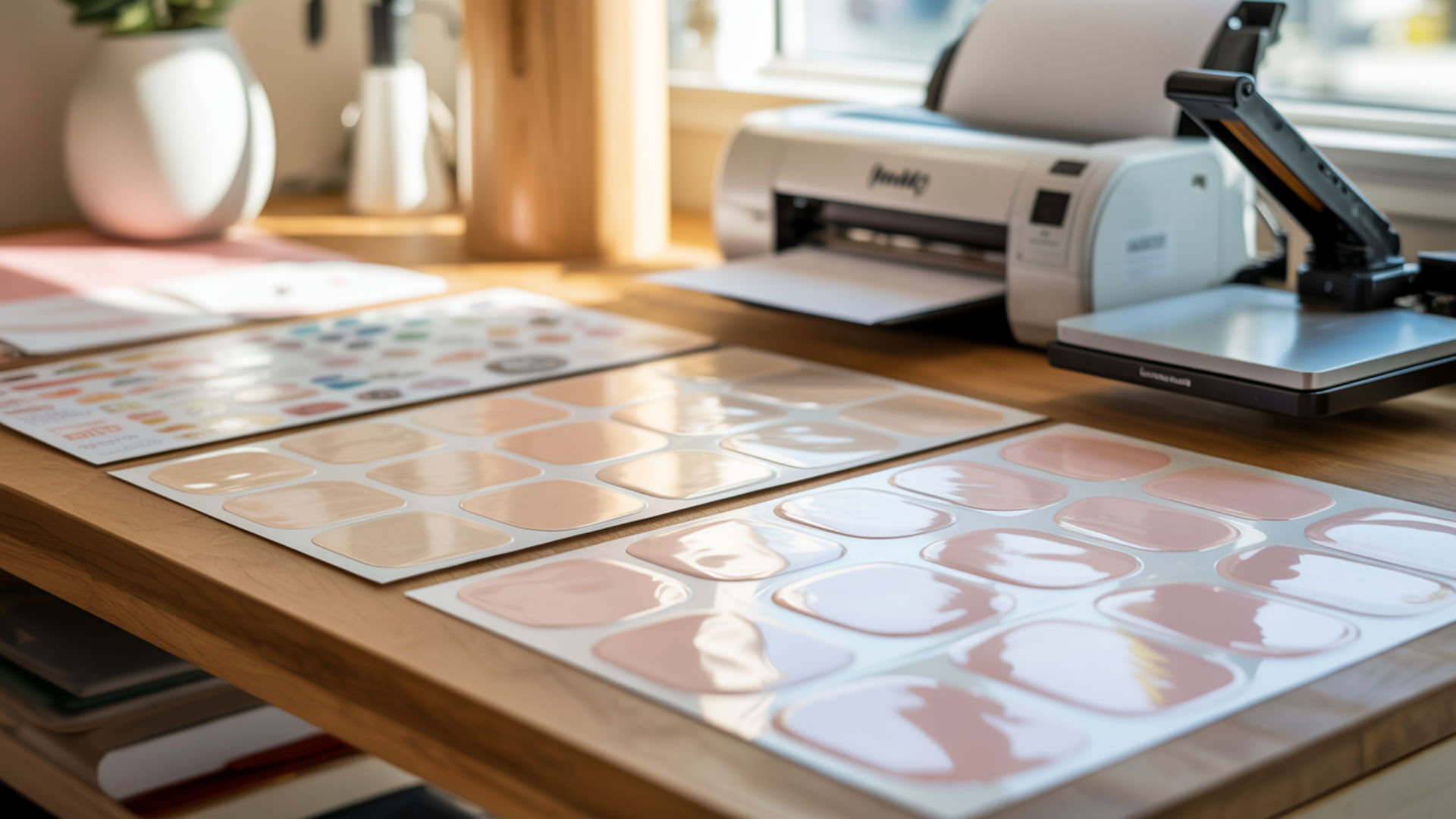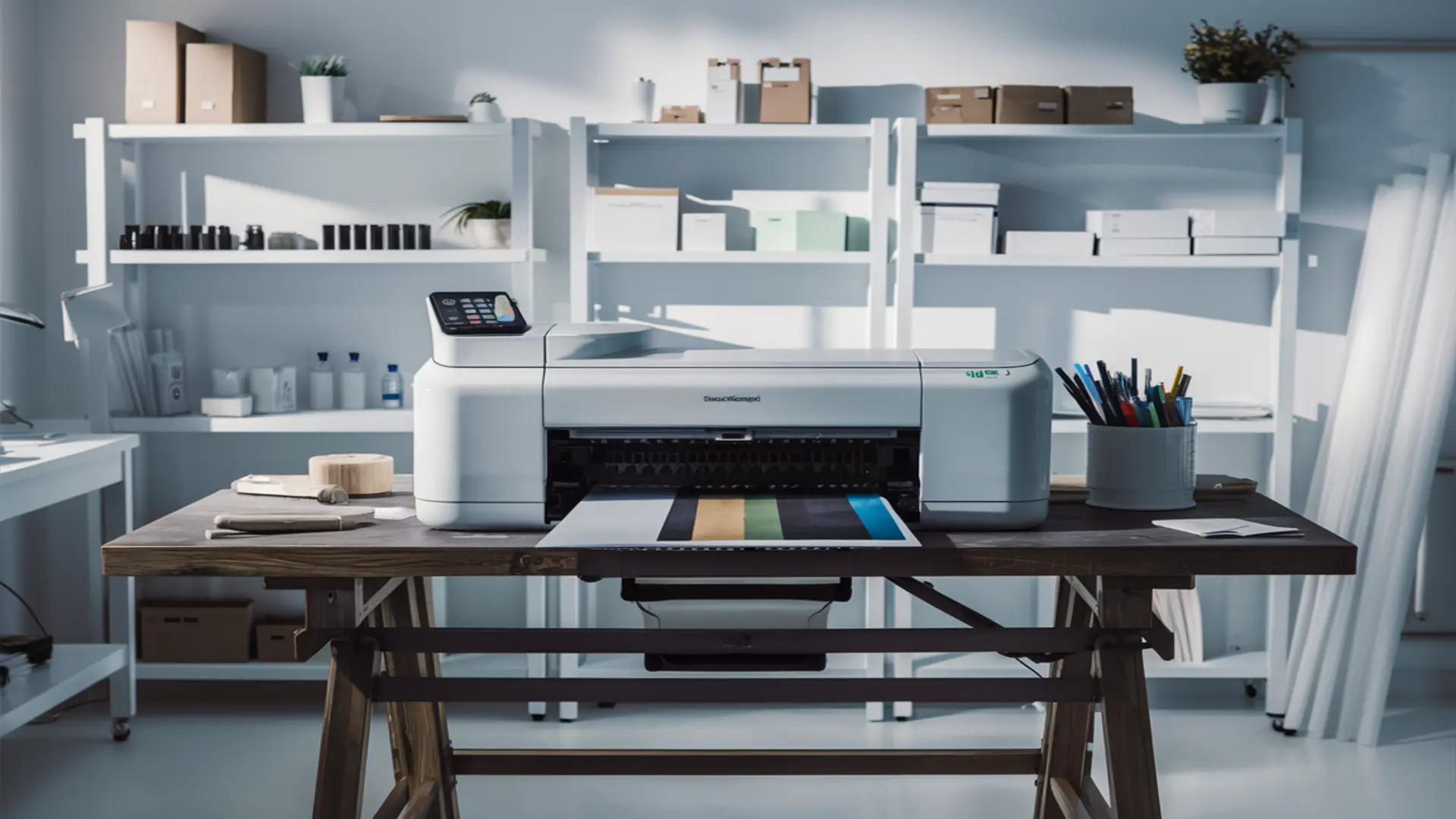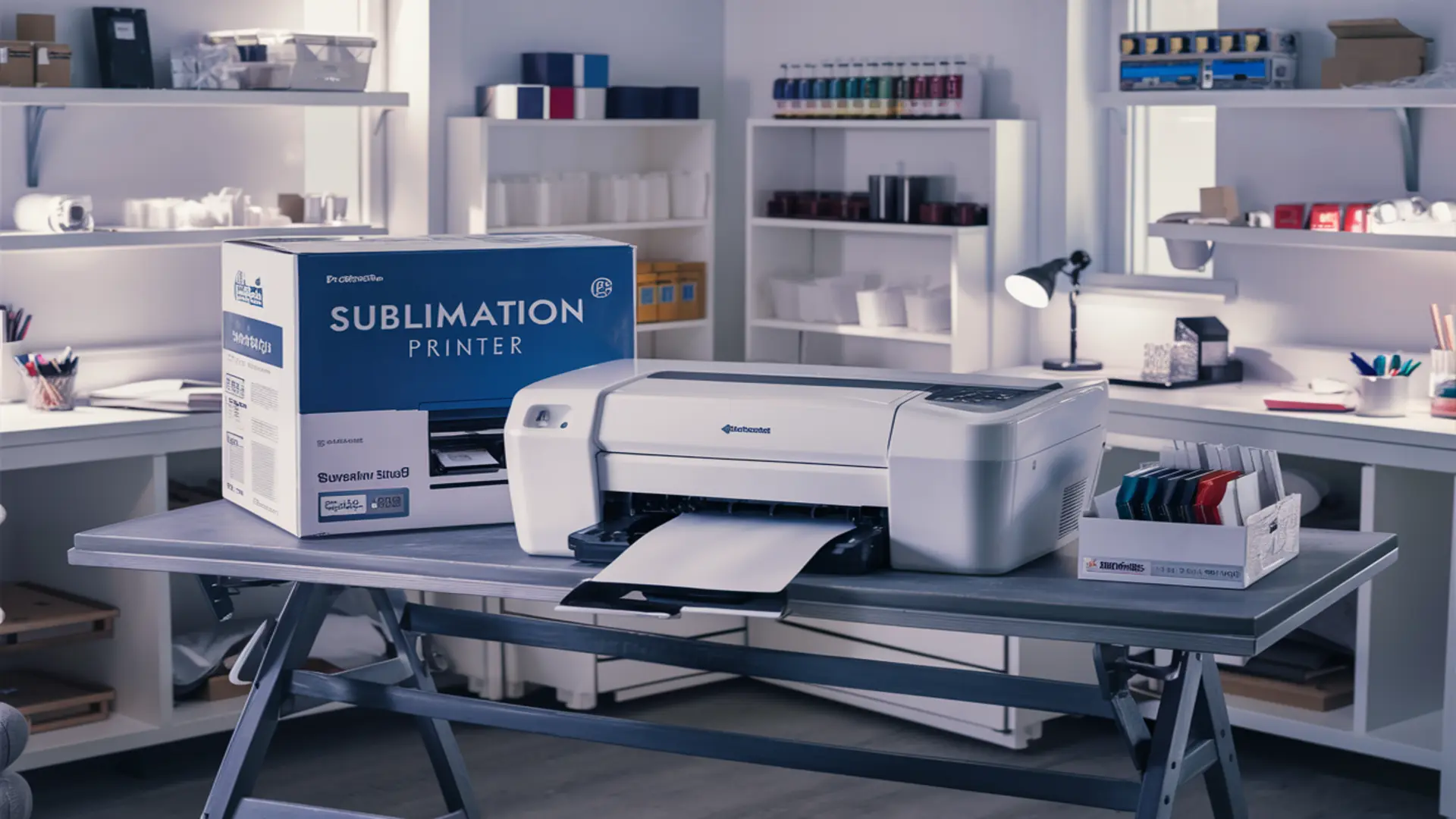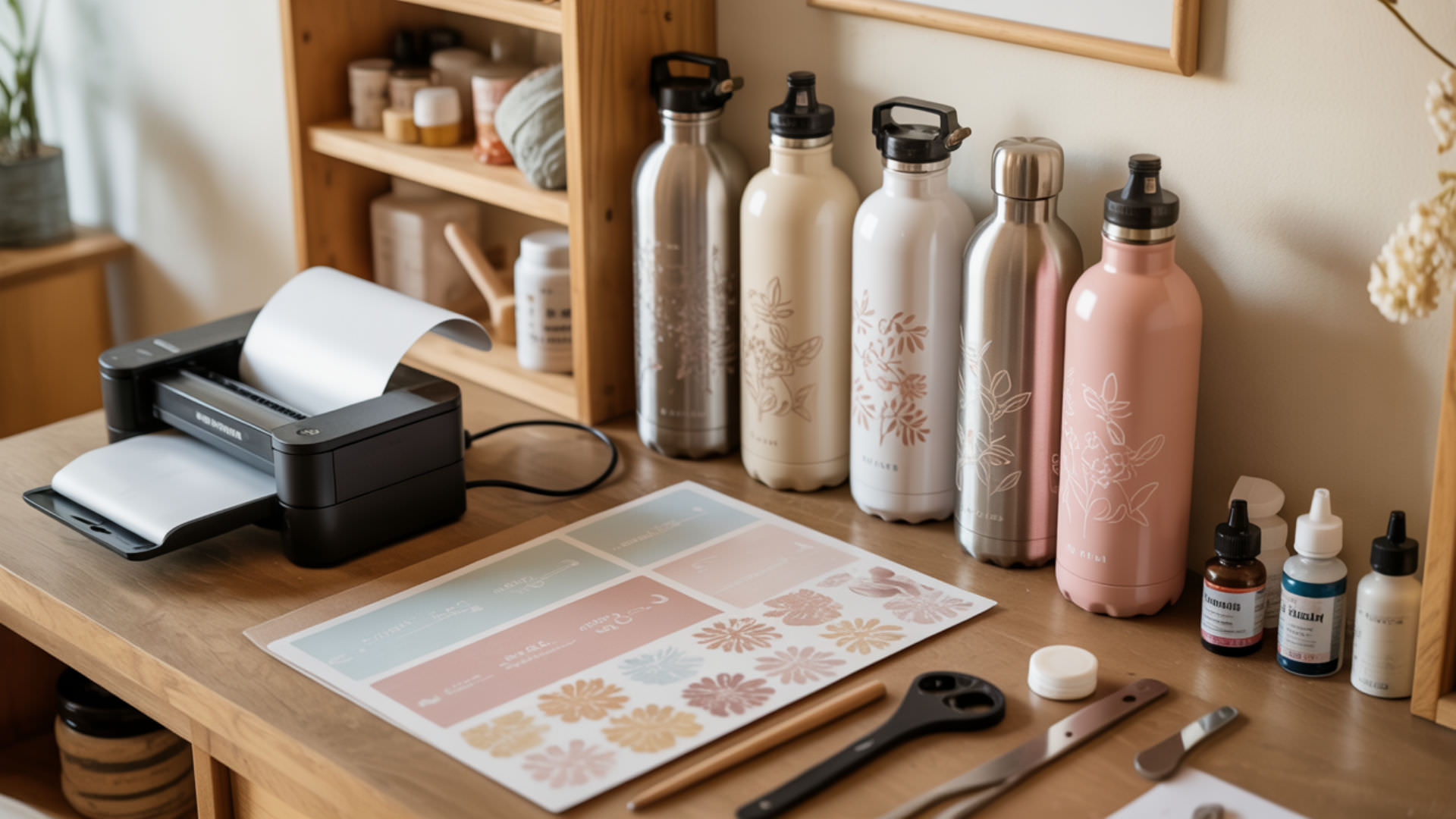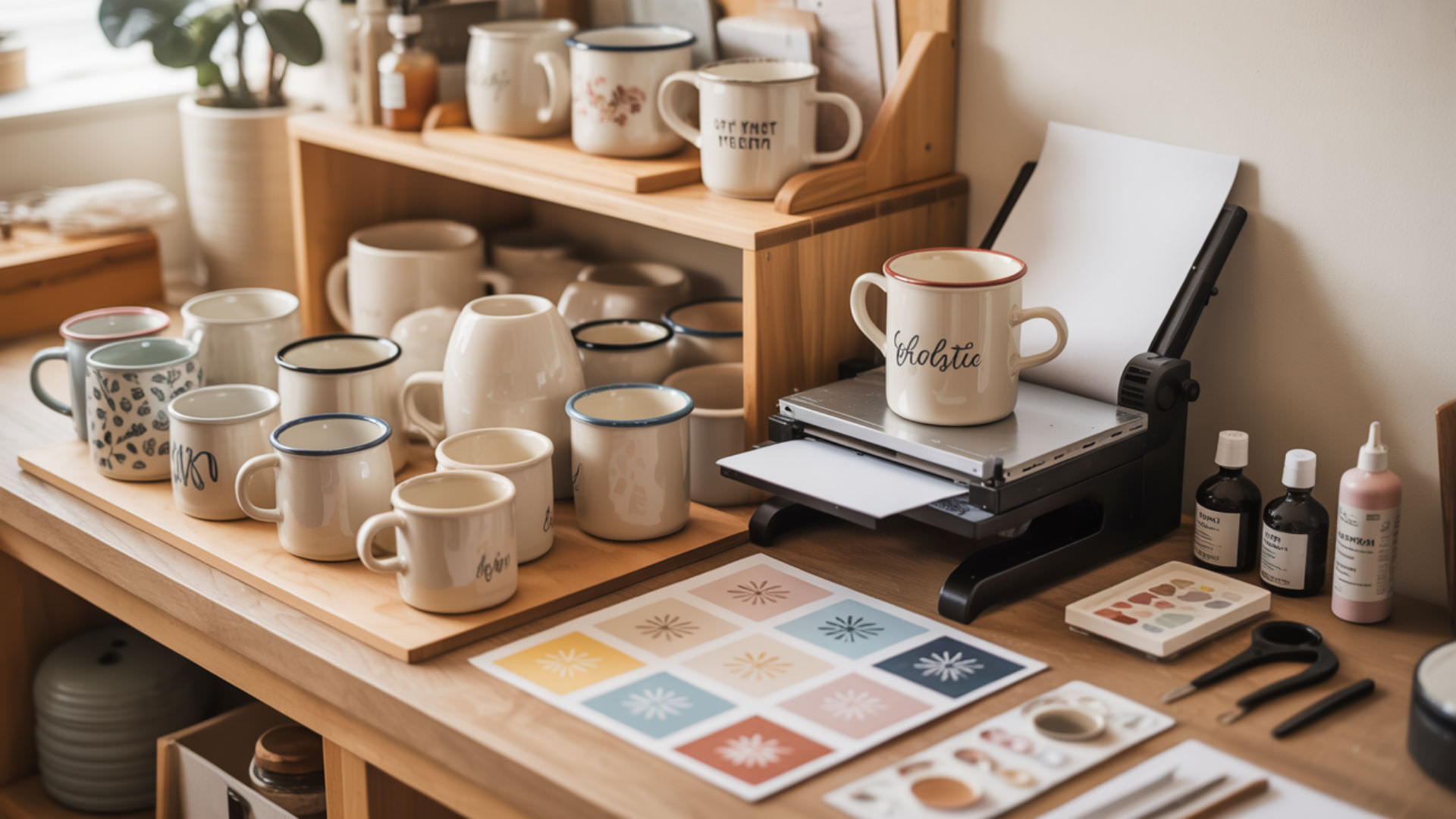Table of Contents
ToggleSublimation phone cases feature polymer-coated surfaces that accept permanent dye transfer for vibrant custom designs. Polycarbonate shells provide the heat tolerance required for pressing while maintaining structural integrity during everyday use. Most sublimation phone case blanks use aluminum inserts with polymer coating that transfer into snap-on plastic frames after pressing. Understanding polymer-based compatibility across all home sublimation products appears in our complete polymer home products guide.
Key Takeaways
- Heat resistance determines whether phone case blanks can withstand sublimation temperatures (350–400°F) without warping or softening during pressing.
- Impact resistance ensures sublimated cases protect devices through drops and daily handling while maintaining design integrity over months of use.
- Aluminum insert systems dominate the market—press the coated metal panel first, then mount into plastic or rubber frames for assembly.
Can Sublimation Transfers Be Applied to Phone Case Blanks?

Sublimation transfers bond permanently to phone case blanks featuring polyester coating or polymer-treated surfaces that accept gaseous dye during heat pressing. Standard plastic phone cases without coating reject sublimation ink entirely—the polymer surface layer enables dye diffusion into the substrate. Sublimation-ready blanks typically combine rigid shells with printable aluminum inserts, creating durable cases with photo-quality graphics that resist scratching and peeling throughout normal use.
What Materials Are Commonly Used for Sublimation-Ready Phone Case Blanks?
Polycarbonate forms the primary shell material for sublimation phone cases due to its heat tolerance, impact resistance, and optical clarity. Aluminum inserts with polymer coating provide the actual printing surface—these removable panels press separately before mounting. Some premium blanks use direct-coated polycarbonate eliminating separate inserts entirely.Some premium blanks use direct-coated polycarbonate eliminating separate inserts entirely. Insights on acrylic glass (PMMA) behavior and sublimation suitability appear in our Sublimation On Blankets guide. Regulatory agencies like the FDA evaluate polycarbonate and related plastics for safety in food contact applications, reflecting their broad use and stability as durable thermoplastics. [1]
Are Phone Case Blanks Heat Resistant Enough for Sublimation Pressing?
Standard sublimation blanks tolerate pressing temperatures between 350–400°F without structural compromise when timing stays within recommended ranges. Heat resistance varies by material—polycarbonate handles higher temperatures than acrylic components. Glass transition temperature (Tg) indicates when plastic begins softening under heat; quality blanks specify Tg ratings above sublimation requirements. Exceeding temperature or time limits causes warping, bubbling, or permanent deformation that ruins both transfer quality and case functionality.
What Time and Temperature Influence Sublimation on Phone Case Materials?
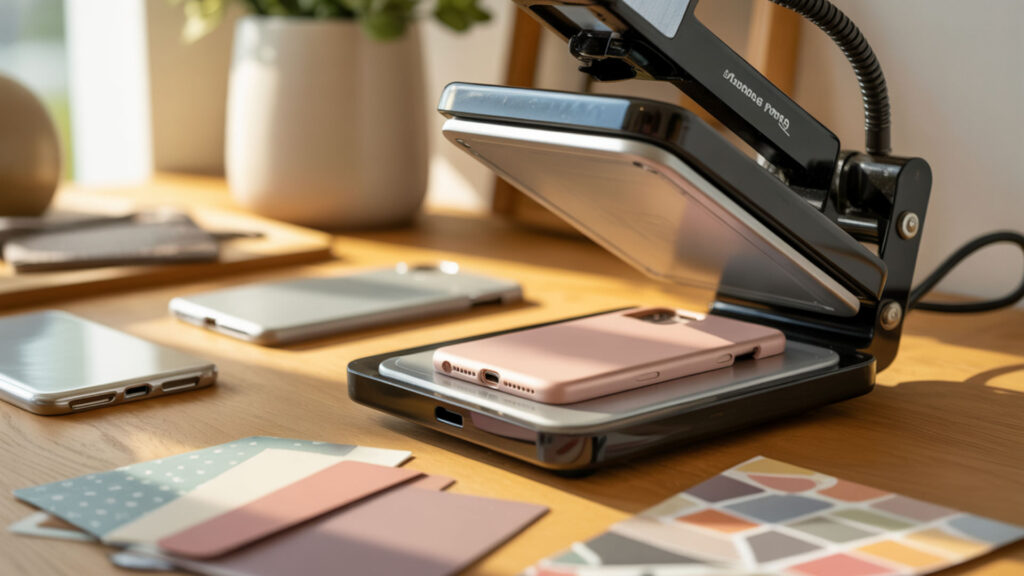
Heat press settings balance dye activation against substrate damage—phone cases require 350–400°F for complete transfer without exceeding material limits. Thermal conductivity determines how evenly heat distributes through case components during pressing cycles. Press temperature activates sublimation dye while time controls penetration depth into polymer coating. Aluminum inserts conduct heat efficiently, requiring careful timing to prevent overheating thin coatings during extended press cycles. Materials with higher thermal conductivity distribute heat more evenly, which is why aluminum inserts heat quickly and require precise timing during sublimation pressing. [2]
How Long Should a Phone Case Be Pressed During Sublimation Transfer?
Press time ranges from 50–120 seconds depending on blank specifications and temperature settings—higher heat requires shorter duration to prevent damage. Thermal conductivity in aluminum inserts means heat transfers quickly, demanding precise timing control. Standard recommendations suggest 50–60 seconds at 400°F or 80–120 seconds at 350°F for complete dye penetration. Thin thermoplastic shells risk softening with extended pressing—always follow manufacturer specifications for specific blank products.
Can Silicone-Style Cases Be Sublimated Using Transfer Paper and Heat?
Silicone cases cannot accept standard sublimation transfers due to incompatible polymer chemistry and insufficient heat resistance for pressing temperatures. The material lacks the molecular structure required for dye bonding—sublimation ink simply won’t adhere permanently. Silicone softens and deforms at temperatures below sublimation activation thresholds, making heat pressing impossible. Alternative decoration methods like UV printing or screen printing work on silicone, but sublimation requires polycarbonate or aluminum-insert blanks.
How Durable Are Sublimation Prints on Phone Cases Over Time?

Sublimation creates permanent molecular bonds within polymer coating—prints resist scratching, peeling, and washing far better than surface-applied methods. UV resistance protects colors from fading during sun exposure, though extended outdoor use accelerates degradation over months. Impact resistance in quality blanks maintains structural integrity through drops without cracking printed surfaces. Properly pressed designs on compatible blanks maintain vibrancy for years under normal indoor smartphone usage conditions.
Do Sublimation Prints Fade Faster on Flexible Phone Case Materials?
Flexible polymer cases often degrade faster than rigid alternatives due to material stress from repeated bending and stretching during installation. Heat resistance varies between flexible and rigid formulations—some flexible coatings tolerate fewer press cycles before degradation. UV exposure affects all sublimation prints regardless of substrate flexibility, causing gradual color shift over extended periods. Rigid polycarbonate cases with aluminum inserts typically outlast flexible alternatives in both print longevity and structural durability.
How Do You Sublimate Phone Cases Step-by-Step?
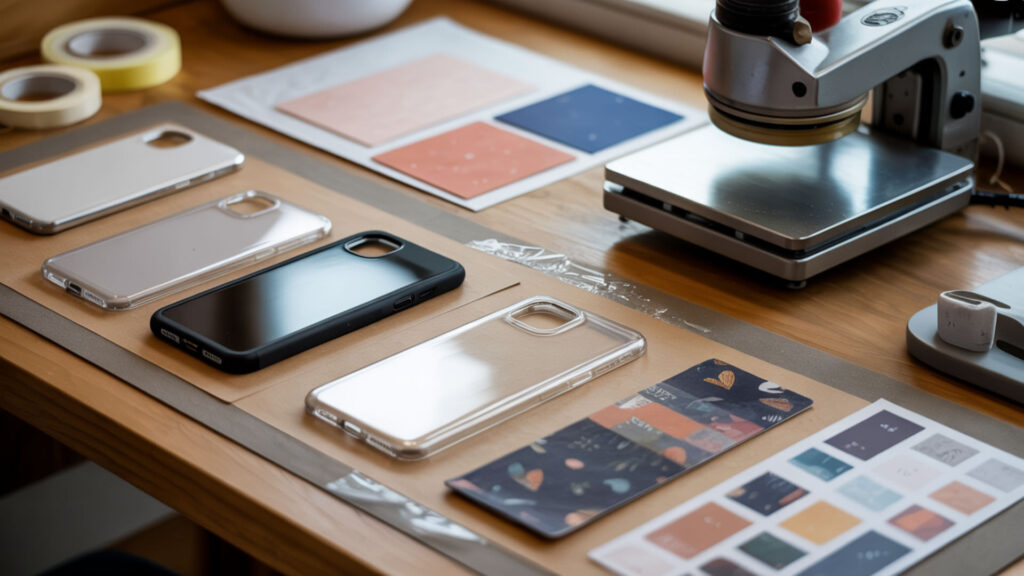
Preheat your press to 380–400°F while printing mirrored designs onto sublimation paper at 300+ DPI resolution. Clean aluminum inserts thoroughly, removing protective film before positioning transfers with heat-resistant tape. Press inserts face-up for 50–60 seconds at medium pressure using protective paper above and below. Pressure-sensitive adhesive on insert backs bonds to case frames after cooling—peel release liner carefully before mounting. Popular adhesive-backed sublimation products appear in our complete pressure-sensitive adhesive best sellers guide.
Can Other Heat-Based Transfer Methods Work on Phone Cases?
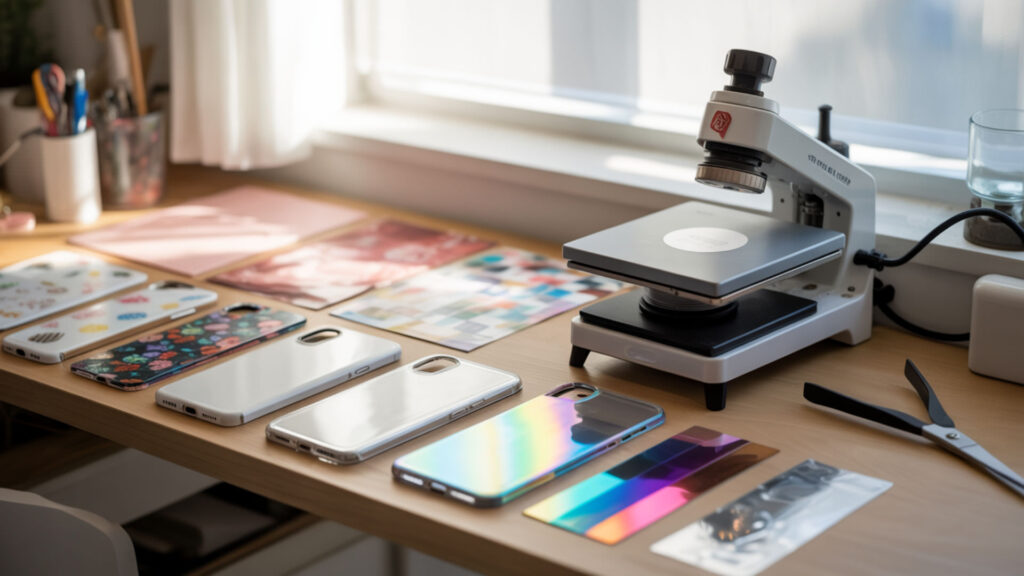
Alternative transfer methods like vinyl, infusible ink, and heat transfer paper work on phone cases but create surface bonds rather than sublimation’s molecular integration. Bonding strength varies significantly—non-sublimation methods often peel or crack under repeated stress that sublimation prints survive easily. Curing requirements differ between methods, with some requiring post-press treatment for maximum adhesion. Sticker workflows share the same bonding and adhesive-performance behavior covered in our complete bonding sticker guide. Polymer compatibility determines which methods work on specific case materials.
Can Non-Sublimation Transfer Methods Fail Due to Timing or Heat Issues?
Overheating weakens adhesive bonds in vinyl and heat transfer applications, causing premature peeling or bubbling on polymer shells. Heat resistance limits vary dramatically between transfer types—what works for sublimation may destroy vinyl adhesive backing entirely. Insufficient heat creates weak bonds that fail during normal handling, while excessive temperatures damage both transfer media and case substrates. Following manufacturer specifications for each specific transfer method prevents both immediate failures and long-term durability problems.
Ready to Create Custom Sublimation Phone Cases?
Sublimation phone cases offer profitable customization opportunities—polymer-coated blanks cost $2–5 each while finished cases sell for $15–35 depending on complexity. Polycarbonate construction ensures durability that customers expect from protective accessories. Master temperature and timing on test pieces before production runs, verifying both transfer quality and structural integrity after pressing. The aluminum insert system simplifies workflow while delivering professional results comparable to commercial phone case printing operations.
Frequently Asked Questions
Do phone case colors shift if overheated during sublimation pressing?
Excessive temperature causes color shifting, particularly in reds and yellows that become orange or muddy when overheated during transfer. The polymer coating degrades at high temperatures, altering how sublimation dye bonds and displays. Yellowing of white areas indicates heat damage to the substrate itself rather than the printed design. Maintaining press temperature between 350–400°F with proper timing prevents color accuracy problems in finished phone cases.
Can sublimation prints crack or peel on phone cases over time?
Properly executed sublimation prints never peel because dye bonds molecularly within the polymer coating rather than sitting on top. Cracking occurs only when the substrate itself fails—usually from impact damage or material degradation unrelated to printing. Peeling indicates either incompatible blank materials, insufficient press temperature, or contaminated surfaces during transfer. Quality blanks with correct pressing parameters produce prints that outlast the phone case’s structural lifespan easily.
Can sublimated phone cases be pressed again later for color correction?
Second pressing attempts over existing sublimation prints produce muddy, unusable results—the polymer coating accepts dye only once during initial transfer. Color correction requires starting fresh with new blanks rather than attempting repairs on pressed pieces. The heat from re-pressing releases previously bonded dye, creating ghosting and color contamination across the entire surface. Failed transfers must be discarded; sublimation is a one-shot process without rework options.
What visual defects appear if a phone case is pressed too long or too hot?
Overheating produces yellowing, bubbling, warping, and color shifting that ruins both aesthetic quality and structural integrity of finished cases. Ghosting appears as blurred or doubled images when transfers shift during pressing or when excess dye bleeds beyond design boundaries. Bubbling in the coating indicates temperatures exceeded the polymer’s tolerance threshold, causing permanent surface damage beneath the print. Time and temperature precision prevents these defects entirely.
Does humidity impact sublimation transfers on phone case blanks?
High humidity in sublimation paper causes steam during pressing that creates spots, uneven coloring, and adhesion failures on phone case transfers. Store paper below 50% relative humidity and allow blanks to reach room temperature before pressing. Moisture trapped between transfer and substrate releases during heating, pushing dye away from the surface and creating visible defects. Climate-controlled storage and pre-pressing moisture removal ensure consistent results across production runs.
References
- Bisphenol a (BPA): Use in food contact application. (2023, April 20). U.S. Food and Drug Administration. https://www.fda.gov/food/food-packaging-other-substances-come-contact-food-information-consumers/bisphenol-bpa-use-food-contact-application
- Thermal properties | Department of materials science & metallurgy. (n.d.). Department of Materials Science & Metallurgy |. https://www.msm.cam.ac.uk/research/research-disciplines/thermal-properties



